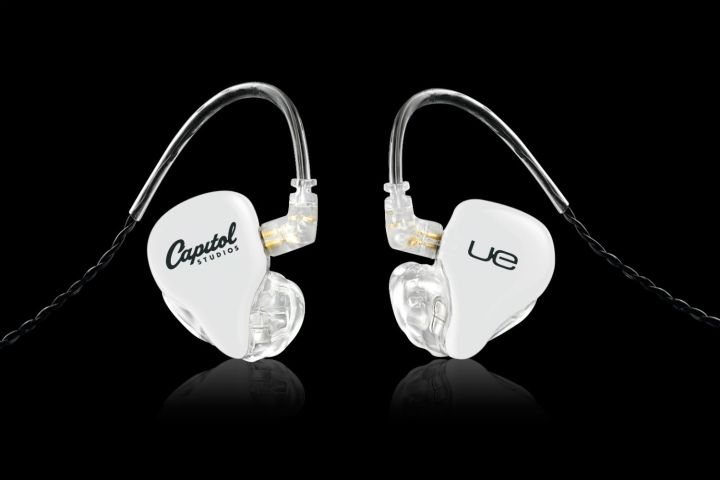
Designed specifically to dig deeper into the growing collection of high resolution digital music, the Reference Remastered are just the second project to be created through a collaboration between UE Pro and the pros at Capitol Studios, whose history stretches all the way back to Old Blue Eyes himself.
UE claims the new monitors are even more revealing, allowing users to experience “the nuances and details of hi-res recordings.” To achieve their goal, the creators tuned the proprietary True Tone balanced armature drivers to extend the frequency range of the Reference Remastered, delivering what the company claims is a flat frequency response all the way up to 18kHz — beyond the frequencies that most adult listeners can even hear.
Thanks to their custom design, which conforms to the user’s ear for a near-perfect fit, the Reference Remastered provide 26 dB of noise attenuation, secluding the listener from the outside world, and allowing for an audio experience that mimics what you’ll hear in a fully-tuned mixing studio.
“Our goal at Capitol Studios is to capture the artists’ performances with absolute faithfulness to their creative intent, and that means capturing their sound to the highest fidelity possible,” said Barak Moffitt, head of global strategic operations at Universal Music Group, who oversees Capitol Studios. “Until recently, it was a challenge to deliver music to the fan in a way that’s completely faithful to the original studio recordings, but hi-res audio has changed that. New technologies are emerging that can help bring studio-quality sound faithfully to the fan. We’re thrilled to work with Ultimate Ears Pro to deliver that kind of fidelity directly to the listener.”
Speaking about the company’s second go-around with Capital Studios, UE Pro’s vice president and general manager Phillip Depallens said “We’re excited to renew our collaboration with Capitol Studios to pioneer the expansion of hi-res audio with the UE Pro Reference Remastered.”
All quotes aside, it will be a serious feat of engineering if UE Pro and Capital’s new creation can indeed deliver an even more revealing listening experience than the original RM. Since they’re custom-made, we may not get the chance to pit the new model against its predecessor — but if UE Pro’s new baby can deliver on its promises, it may just be the most accurate in-ear monitor on the market.
Editors' Recommendations
- Ultimate Ears somehow managed to jam 21 drivers into these in-ear monitors
- The new AMD Radeon Pro GPUs look perfect for a powerful Mac Pro update
- Best Cyber Monday Deal? This amazing Ultimate Ears Bluetooth speaker is $125 off


